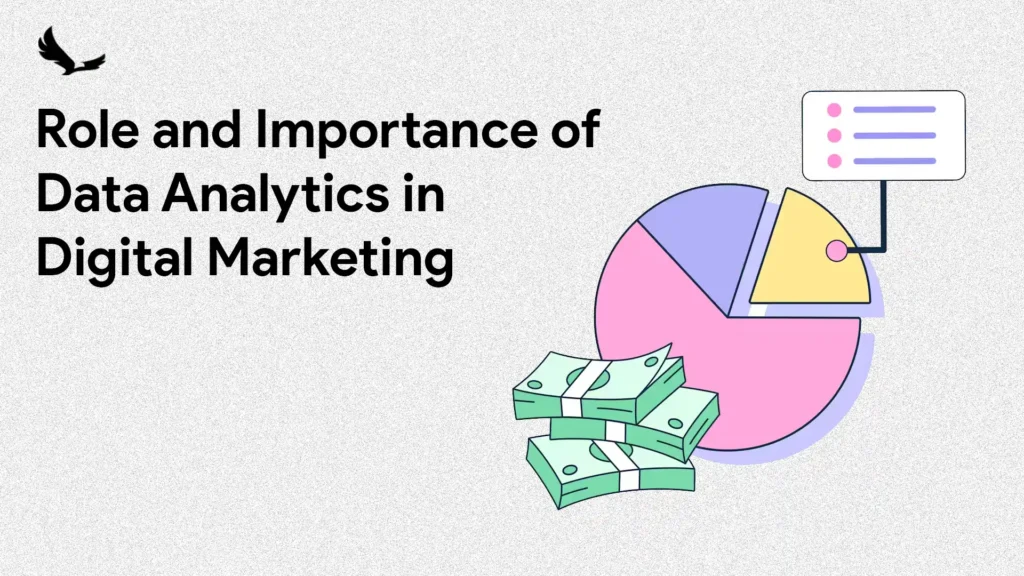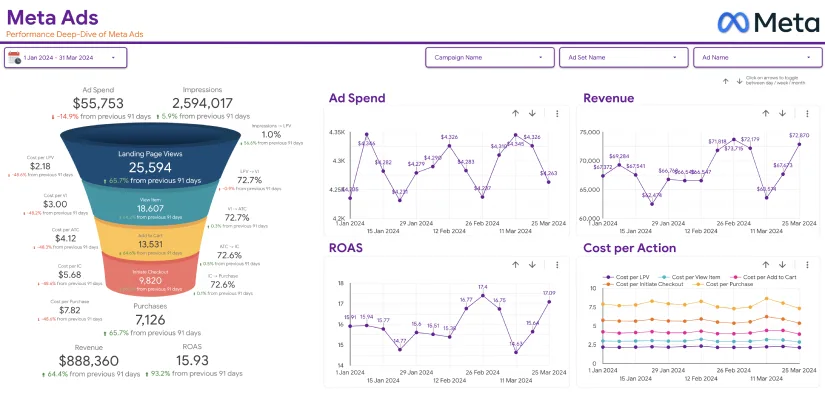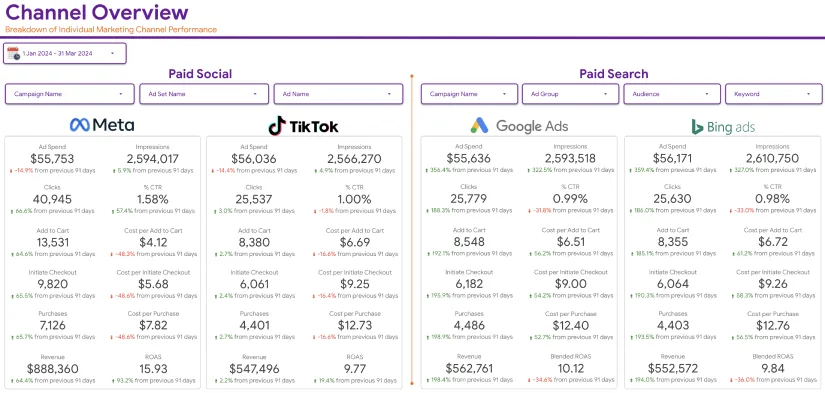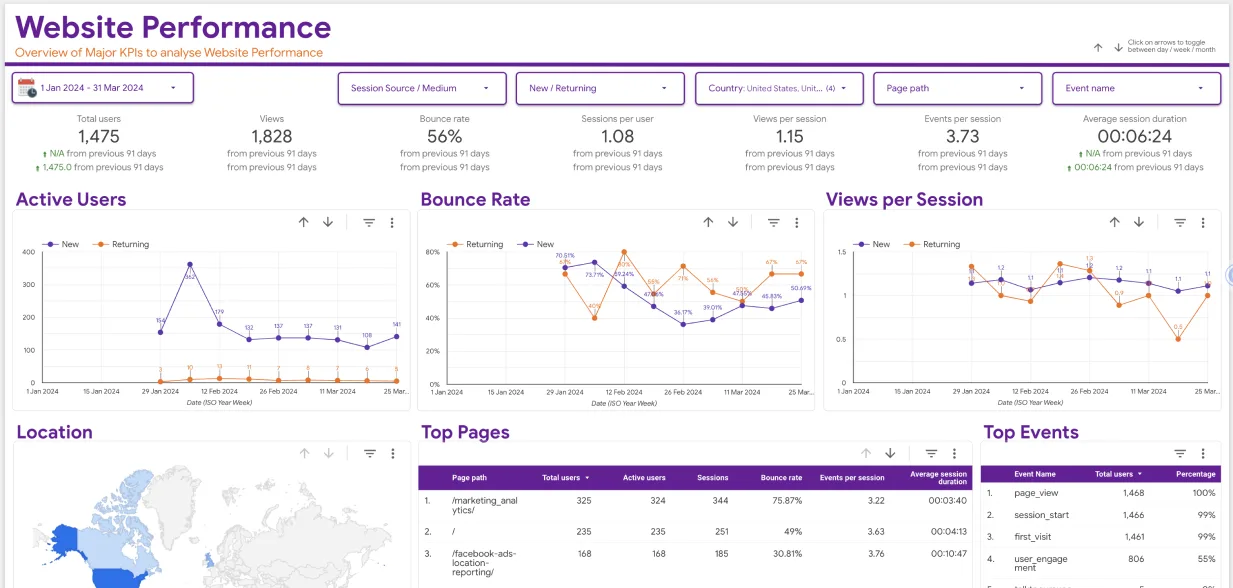As a business owner or marketer, knowing the different types of marketing data is crucial to accelerate growth. As it is rightly said, data is the new oil. Just like oil powered the industrial revolution, data fuels the current economy, driving innovation and growth.
For marketers, data is a lot more than just a resource. It is a strategic asset that can unlock unparalleled insights into customer behavior, preferences, and trends. By leveraging this data effectively, businesses can craft targeted marketing strategies, boost customer experiences, and achieve higher ROI.
In this article, we’ll explore what is marketing data, uses, types, and more to help you gain a competitive edge-
What is Marketing Data?
Every marketing initiative delivers some kind of result. This result or information that you collect from various sources is your marketing data. It can provide insights into customer behavior, preferences, and interactions with your business.
The trained and experienced eyes can make sense of this information and use it for making decisions about marketing strategies, campaigns, and product development
How is the Marketing Data Used?
Before we get to the different types of data in marketing, it is essential to know the different ways in which it can be used. Here are some common uses-
Customer Segmentation
With the marketing data, businesses can divide their customer base into various groups based on characteristics such as demographics, purchase behavior, and interests. This division or segmentation enables personalized marketing, leading to improved engagement and conversions.
Personalization
When you understand individual customer preferences, the marketing messages can be tailored to better resonate with each segment. It is proven that personalization leads to improved customer satisfaction and loyalty.
Predictive Analytics
There are advanced analytics tools that allow businesses and marketers to use historical data to predict future trends and customer behaviors. This predictive capability allows for proactive marketing initiatives.
Performance Tracking

Marketing data also helps track marketing campaign performance in real-time. Various metrics like conversion rates, click-through rates, and customer acquisition costs offer excellent insights into what’s working and what needs adjustment.
Product Development
Understanding customer needs and preferences through data helps businesses develop products according to the market demand. Feedback loops from customers can be analyzed to refine products over time.
What are the Different Types of Marketing Data?
Marketing data can be categorized into several types, each serving different purposes and collected through various methods. Here are some of the most important types of marketing data-
1. Demographics Data
- Definition – This data includes information about the characteristics of the audience such as age, gender, income, education level, marital status, and occupation.
- Use – Demographic data is crucial for understanding the target audience and crafting messages that resonate with specific segments.
2. Behavioral Data
- Definition- Behavioral data tracks the actions of individuals as they interact with a brand, including website visits, purchase history, email opens, and social media engagement.
- Use- This data helps in understanding customer behavior patterns and preferences, allowing for more targeted marketing efforts.
3. Transactional Data
- Definition – Transactional data includes details of transactions made by customers, such as purchase amount, date, product details, and payment method.
- Use – Analyzing transactional data helps businesses understand purchasing trends and customer lifetime value, and can inform upselling and cross-selling strategies.
4. Engagement Data
- Definition – Engagement data tracks how customers interact with marketing content, such as social media likes, shares, comments, email clicks, and time spent on a website.
- Use – This data helps gauge the effectiveness of content and campaigns, and identify what content resonates most with the audience.
5. Geographic Data
- Definition – Geographic data includes information about the physical location of customers, such as country, city, region, and postal code.
- Use – This data is useful for location-based marketing, tailoring campaigns to local markets, and understanding regional preferences.
6. Psychographic Data

- Definition – Psychographic data delves into the psychological attributes of customers, including their values, attitudes, interests, and lifestyles.
- Use – This data allows for deeper customer insights, enabling more emotionally resonant and persuasive marketing strategies.
7. Competitive Data
- Definition – Competitive data involves information about competitors, including their market position, product offerings, pricing strategies, and customer reviews.
- Use – This data helps businesses understand their competitive landscape, identify opportunities for differentiation, and develop competitive marketing strategies.
8. Operational Data
- Definition – Operational data is related to the internal processes of a business, such as supply chain efficiency, inventory levels, and sales operations.
- Use – This data helps optimize business operations, reduce costs, and ensure that marketing efforts are aligned with operational capabilities.
How to Collect Marketing Data?
The data quality will only be as good as the data source. Here are some common methods of collecting different marketing data types-
Web Analytics Tools
Tools like Google Analytics, Adobe Analytics, and others track and report website traffic and user behavior. These tools provide insights into how visitors interact with a website, where they come from, and what content they engage with.
Customer Relationship Management (CRM) Systems
CRM systems store customer information, including contact details, purchase history, and communication records. This data is crucial for personalized marketing and customer segmentation.
Point-of-Sale (POS) Systems
POS systems collect transactional data during the checkout process. This data is essential for analyzing sales trends, inventory management, and customer purchase behavior.
Email Marketing Platforms
Email marketing tools like Mailchimp, HubSpot, and others track metrics such as open rates, click-through rates, and conversion rates, providing insights into the effectiveness of email campaigns.
Social Media Analytics
Platforms like Facebook, Twitter, and Instagram offer built-in analytics tools that provide data on user engagement, audience demographics, and content performance. Social listening tools can also track brand mentions and sentiment across social media.
Mobile Analytics Tools

Mobile analytics tools track user behavior within mobile apps, including screen views, button clicks, and session durations. This data is crucial for optimizing mobile user experiences.
Competitive Analytics Tools
Tools like SEMrush, SimilarWeb, and Ahrefs offer data on competitor strategies, including their website traffic, keyword rankings, and online advertising performance.
Customer Feedback and Reviews
Collecting feedback through reviews, feedback forms, and customer support interactions provides valuable attitudinal data. This information helps businesses understand customer satisfaction and areas for improvement.
Surveys and Questionnaires
Collecting feedback through reviews, feedback for Surveys are a direct method of collecting data from customers. They can be conducted online, via email, or in person, and can gather a wide range of data, from demographics to psychographics and attitudinal information.ms, and customer support interactions provides valuable attitudinal data. This information helps businesses understand customer satisfaction and areas for improvement.
IoT Devices and Sensors
Internet of Things (IoT) devices can collect contextual data, such as location, temperature, and time of day. This data can be used to create hyper-targeted marketing campaigns.
What are the Best Practices for Using Marketing Data?
Effectively using marketing data is as important as collecting different types of marketing data. Here are some best practices-
1. Ensure Data Quality
Data accuracy is paramount. Inaccurate data can lead to misguided marketing strategies and wasted resources. Regularly clean and validate your data to ensure it is up-to-date and reliable.
2. Integrate Data Sources
Combining data from different sources provides a more comprehensive view of the customer. Use data integration tools to create a unified customer profile, which can enhance personalization and targeting.
3. Respect Customer Privacy
With increasing concerns about data privacy, it’s crucial to collect and use data responsibly. Ensure compliance with data protection regulations such as GDPR and CCPA, and be transparent with customers about how their data is used.
4. Use A/B Testing
Comparing two different versions of an asset such as email or website to analyze performance is known as A/B testing. This method allows you to make data-driven decisions and optimize your marketing strategies based on actual user behavior.
5. Use Data Analytics Tools
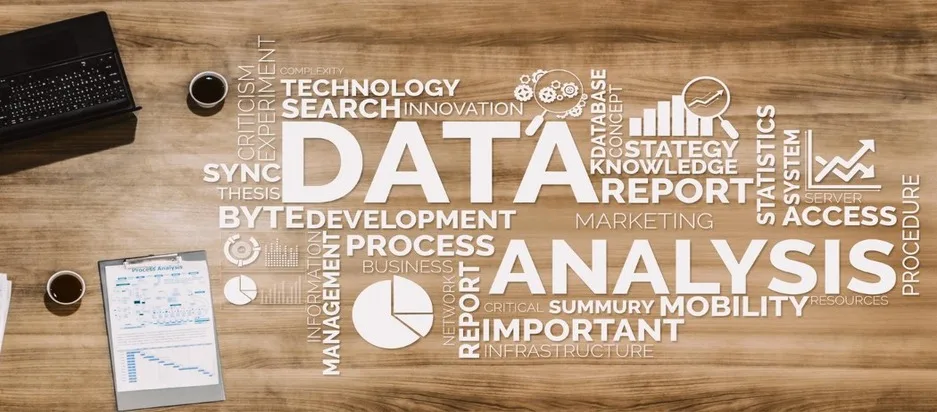
Look for analytics tools or platforms that excel in processing larger data volumes and offer actionable insights. Tools like Tableau, Power BI, and Google Data Studio help visualize data and make informed decisions.
6. Focus on KPIs
Identify and track the KPIs that matter most to your business goals. Whether it’s customer acquisition cost (CAC), customer lifetime value (CLV), or conversion rates, focusing on the right metrics will help you measure the effectiveness of your marketing efforts and make informed decisions.
7. Automate Data Collection and Analysis
Automation tools can streamline the process of collecting and analyzing marketing data. Tools like marketing automation platforms, CRM systems, and analytics software can help you track customer interactions, automate follow-ups, and generate insights in real time.
8. Iterate and Optimize
Marketing is an ongoing process of testing, learning, and optimizing. Use the insights gained from your marketing data to continually refine your strategies and improve results. Review your marketing data regularly to identify the latest trends and areas for improvement.
Take Marketing Strategies to the Next Level with the Right Marketing Data
When used correctly, the different types of marketing data can significantly enhance the marketing efforts of any business. By knowing the different types of data, the collection process, and the best practices for using data, it is easier for businesses to create more personalized, targeted, and effective marketing strategies.
Just like modern technologies, the methods to collect and analyze data will also continue evolving. Staying ahead of these trends will ensure that your marketing efforts remain relevant, impactful, and in tune with the needs of your customers.



